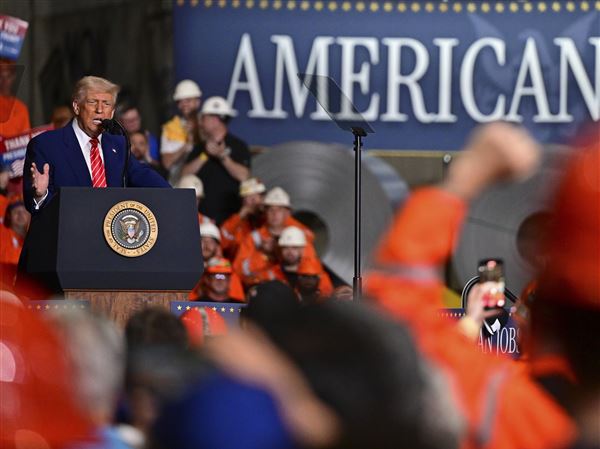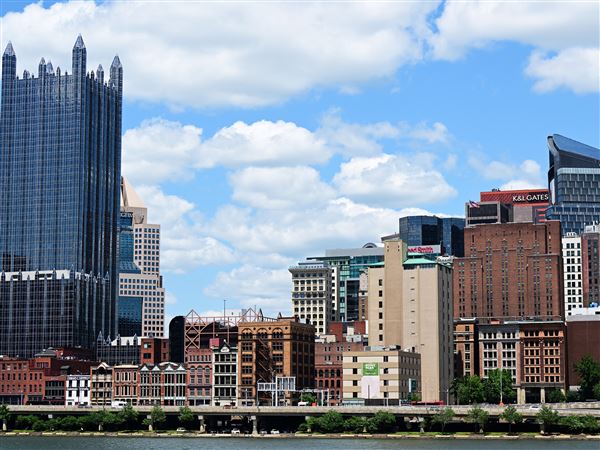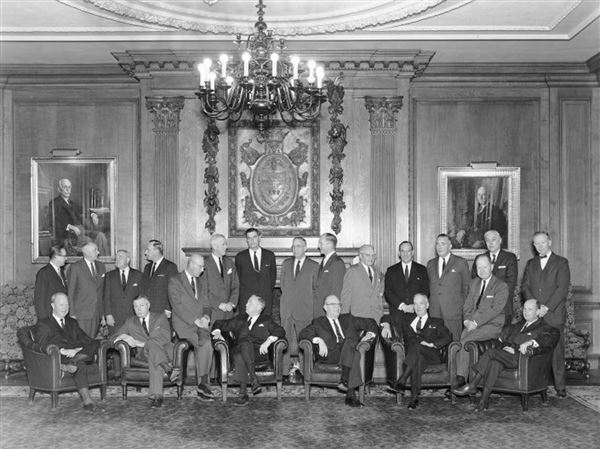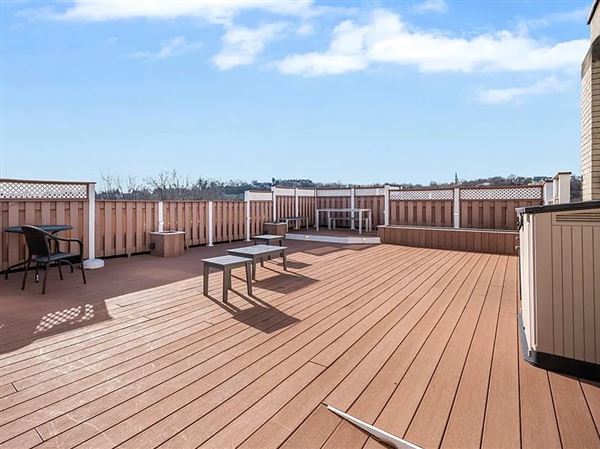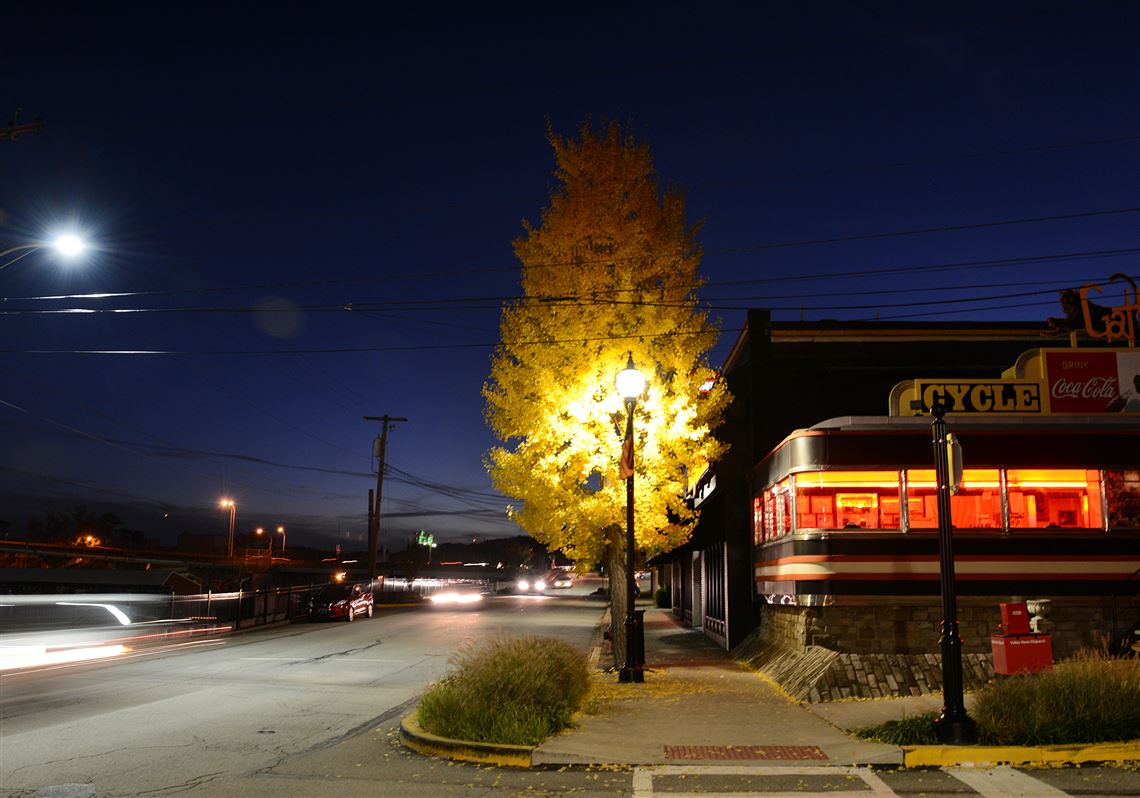Municipalities paying West Penn Power Co. to keep their streetlights on now have an opportunity to invest in more efficient lighting that promises to add cushion to borough and township budgets. By some estimates, they could save as much as 50 percent on their power bills.
Local government officials learned last week the offering is a bit more nuanced than it sounds.
Streetlights are subject to a somewhat complicated transition to light-emitting diode, or LED, technology, as explained during a workshop hosted by West Penn Power, the Pennsylvania Department of Environmental Protection and lighting manufacturer General Electric.
“We’re not talking about just changing the bulb here. This is an entire different approach to providing light,” said Geoff Bristow, DEP regional energy program manager.
The workshop Wednesday at Southpointe gave several dozen local officials a chance to ask questions about the technology, the utility’s rate structure and how the biggest savings could be achieved.
Some brought their power bills to calculate potential savings using a spreadsheet the agency developed with the help of interns from Bucknell University.
West Penn Power’s parent company FirstEnergy Corp., as part of a settlement earlier this year on a package of new distribution rates, has agreed to offer a separate rate to municipalities across its four Pennsylvania utilities who want to install LED fixtures in streets and parks.
At least two dozen municipalities in southwestern Pennsylvania have shown a “strong degree of interest,” according to West Penn Power spokesman Todd Meyers. These own about 10,000 of West Penn’s 57,000 streetlights, he said, and about 1,000 are in the process of being converted to LED.
LED becomes cost effective
While LED light was first conceived about 50 years ago, the costs have fallen in recent years and efficiency levels improved, said Diane Holder, a manager of external communications for West Penn Power.
“We wanted to have some comfort level with the (fixtures) themselves,” Ms. Holder said. “We didn’t want to put out a product that would cause some concerns and issues for our customers. We wanted to make sure the savings were there.”
LED fixtures can save money over time because they require far less power than traditional lighting.
They are estimated to use about one-third to one-fourth of the energy consumed by high-pressure sodium lights and last longer. When designed properly, an LED circuit can convert 80 percent of the energy it consumes into light, while incandescent bulbs convert about 20 percent.
Losing light to glare
Currently, most streetlight fixtures use a high-pressure sodium lamp that emits an orange hue. Others use a mercury vapor lamp, an older technology no longer manufactured, that emits a blue hue.
LED light is much brighter and more targeted than the high-pressure sodium light, which loses much of its light to glare, said Steve West, regional sales manager for GE Lighting.
“The last thing you want is a big glare bomb as you’re going down the street,” Mr. West said.
But this also means the location of the pole becomes more important. If there’s a large strip of grass between the road and sidewalk, it may be possible to illuminate only one of those areas.
While the costs of installation on existing light poles are folded into the new LED rate, any relocation of a pole or fixture would come at the expense of the municipality.
Mr. Meyers said the utility recommends officials discuss the change with the public and visit communities that have it. Municipalities must order at least a dozen lights, which will be installed on existing company-owned light poles on a first-come, first-served basis.
“This is a new technology, and things will look a little bit different,” Mr. Meyers said. “The light isn’t the same as the light we’ve grown up with. That’s not to say it’s bad light; it’s just different.”
Getting the price right
Under the tariff effective May 3, West Penn offers three brands of bulbs manufactured by General Electric ranging from 50 to 260 watts. Depending on the brand and size, the utility charges a fixed monthly distribution fee of anywhere from $5.52 to $15.57. The initial term of the contract lasts 10 years and can be renewed for successive one-year terms.
Pricing was one of several issues over which the Public Utility Commission heard objections from Citizens for Pennsylvania’s Future, or PennFuture, a Harrisburg-based group that advocates for environmental policy changes. After the rate case settlement in February, PennFuture said FirstEnergy’s offerings did not reflect actual market prices and could leave customers paying more than they should.
The commission ultimately sided with FirstEnergy, saying customers will receive the benefits of LED investment.
Angelo Pallone, borough manager for Scottdale, said an LED installer approached him two years ago and asked to study town’s roughly 470 streetlights and present a report on potential savings.
While savings were there, the installation was expensive — and even more costly when considering the borough leased the light poles from the utility and would have to buy them to make any major changes.
“It would’ve cost us an arm and a leg to buy all our fixtures, so that was totally dropped because the cost would’ve been so large,” Mr. Pallone said.
That’s changed with the utility proposing to change out the fixtures.
At the end of the workshop, Mr. Bristow provided Mr. Pallone a quick estimate on the borough’s energy savings: With LED, Scottdale would pay $3,400 monthly, compared with $6,500 it pays now.
“Our citizens don’t like the yellow light,” Mr. Pallone said, referring to that emitted by high-pressure sodium. “This is a win-win for everyone.”
Daniel Moore: dmoore@post-gazette.com, 412-263-2743 and Twitter @PGdanielmoore.
First Published: October 27, 2015, 8:31 a.m.
